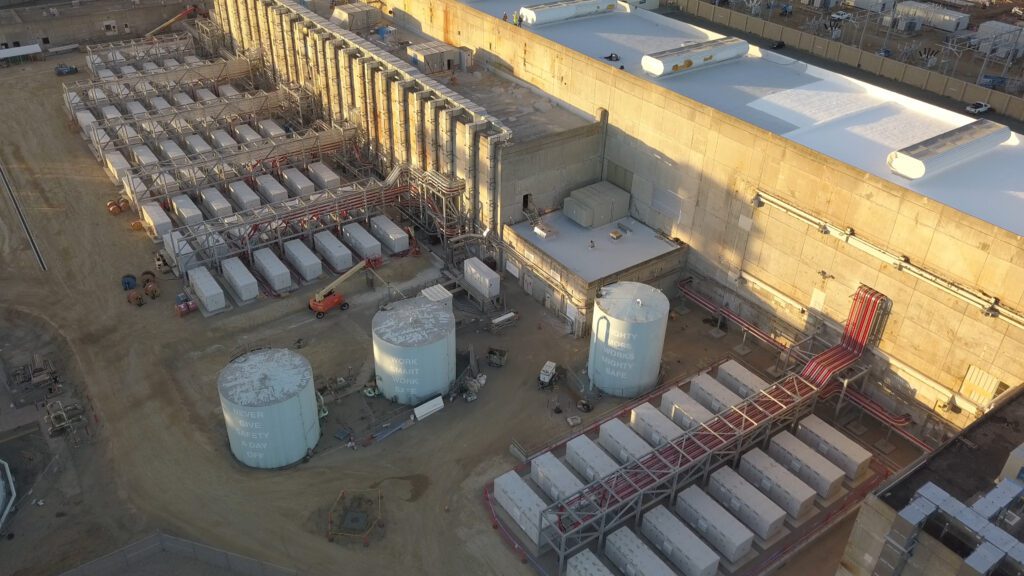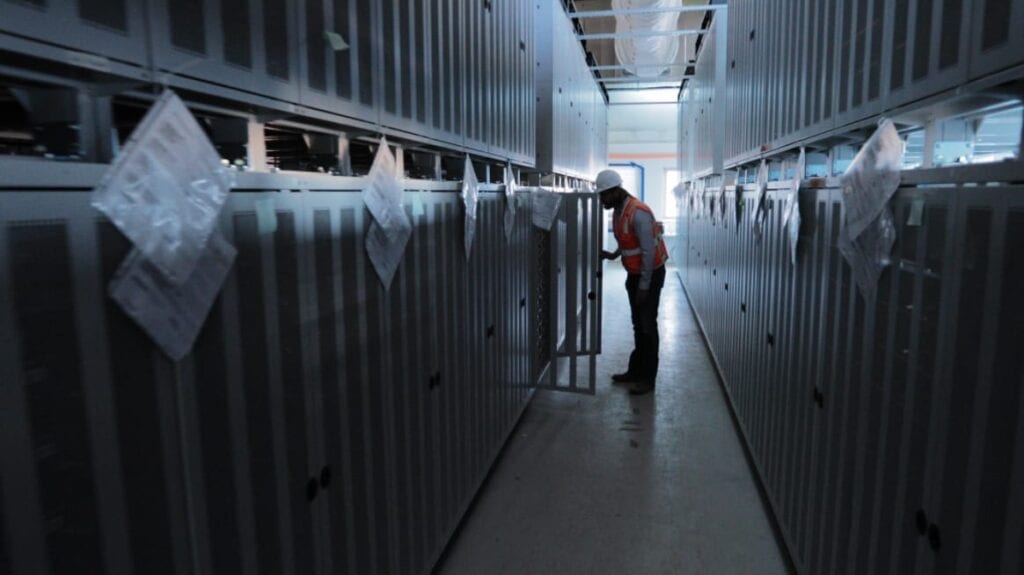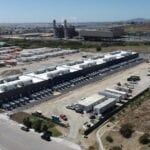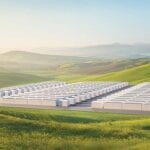Vistra, the Texas-based integrated retail electricity and power generation company, said it has completed the second phase of its Moss Landing Energy Storage Facility expansion project in California. The group on Aug. 19 announced it has added 100 MW/400 MWh to what at present is the world’s largest battery energy storage facility.
“This facility provides a solution California desperately needs and this expansion was able to come online at the right time, as the summer heat intensifies and demand for electricity is at its highest,” said Curt Morgan, CEO at Vistra. “It is possible because of the partnership between Vistra and the State of California, Pacific Gas and Electric Company, LG Energy Solution, and Burns & McDonnell. ”
Morgan continued: “The state’s laudable immense buildout of intermittent renewable power has both lowered emissions and presented a reliability challenge. California produces an excess amount of renewable power during the day while the sun is up, but often struggles to meet demand as the sun goes down. Our Moss Landing battery system helps to fill that reliability gap, storing the excess daytime power so it doesn’t go to waste and then releasing it to the grid when it’s needed most.”
400 MW/1,600 MWh of Capacity
Moss Landing now has total capacity of 400 MW/1,600 MWh. The Phase II expansion project was announced in early 2020, and construction began in September of last year. The first phase of the project was brought online in December 2020, immediately becoming the largest such installation in the world, topping another California project. Vistra on Thursday in a news release said the Phase II expansion was completed “ahead of schedule despite the many challenges presented by the COVID-19 pandemic.”

“This facility and others like it will show California and the world what lithium-ion battery storage can accomplish,” said Mark Rothleder, senior vice president and COO of the California Independent System Operator (CAISO), the state’s power grid manager.
The lithium-ion battery system is co-located on the site of the 1,060-MW natural gas-fired Moss Landing Power Plant in Monterey County, which has operated since 1950. The project utilizes technology from LG Energy Solution. Burns & McDonnell provided engineering, procurement, and construction expertise for the expansion.

“What’s great about this particular site is that it has the space to support even further expansion—up to 1,500 MW/6,000 MWh—while responsibly utilizing our existing site infrastructure, including existing transmission lines and grid interconnection,” said Morgan. “California leads the country in the transition away from fossil fuels and the Moss Landing Energy Storage Facility stands as a model for how batteries can support intermittent renewables to help create a reliable grid of the future.”
“This was truly an amazing project for everyone involved,” said Roy Kowalik, chairman and CEO of Burns & McDonnell. “Designing and building the expansion of the world’s largest battery energy storage facility— particularly during a global pandemic—was very fulfilling. Renewable resources cannot be fully deployed unless we have a massive investment in energy storage like the Moss Landing facility. We are honored to partner with Vistra on such an iconic project that will help provide reliable power to the residents in the region.”
Agreement with PG&E
The Phase II expansion is operating under a 10-year resource adequacy agreement with Pacific Gas and Electric Company (PG&E). The 300-MW/1,200-MWh Phase I project has a similar 20-year resource adequacy agreement with PG&E.

“When people think about Moss Landing energy, they usually envision the landmark power plant and its two tall smokestacks,” said John M. Phillips, Monterey County supervisor. “In fact, Vistra’s Moss Landing Energy Storage Facility is the largest battery storage facility of its kind in the world and is providing a tremendous amount of reliable, clean energy. Vistra continues to be an outstanding community partner and reliable steward of the historic Moss Landing Power Plant.”
“As more intermittent resources integrate into power grids, the role of battery energy storage in supplying energy and ensuring grid reliability becomes even more important,” said Youngjoon Shin, senior vice president of ESS Business for LG Energy Solution. “On this note, Vistra’s effort towards transitioning to emission-free energy is vital, and LG Energy Solution hopes to make the transition a reality through advanced lithium-ion battery technology. As the world’s largest energy storage facility, Moss Landing is especially meaningful as it shows the dedication of both LG Energy Solution and Vistra to expanding eco-friendly renewable energy sources through energy storage technology.”
Vistra last year said it would spend about $5 billion by 2030 on renewable energy and battery energy storage projects, including the nearly $1 billion of projects already underway. The utility is shifting its fleet toward zero-emission technologies. Moss Landing is the flagship project of the company’s carbon-free Vistra Zero portfolio of generation assets.
—Darrell Proctor is a senior associate editor for POWER (@POWERmagazine).









